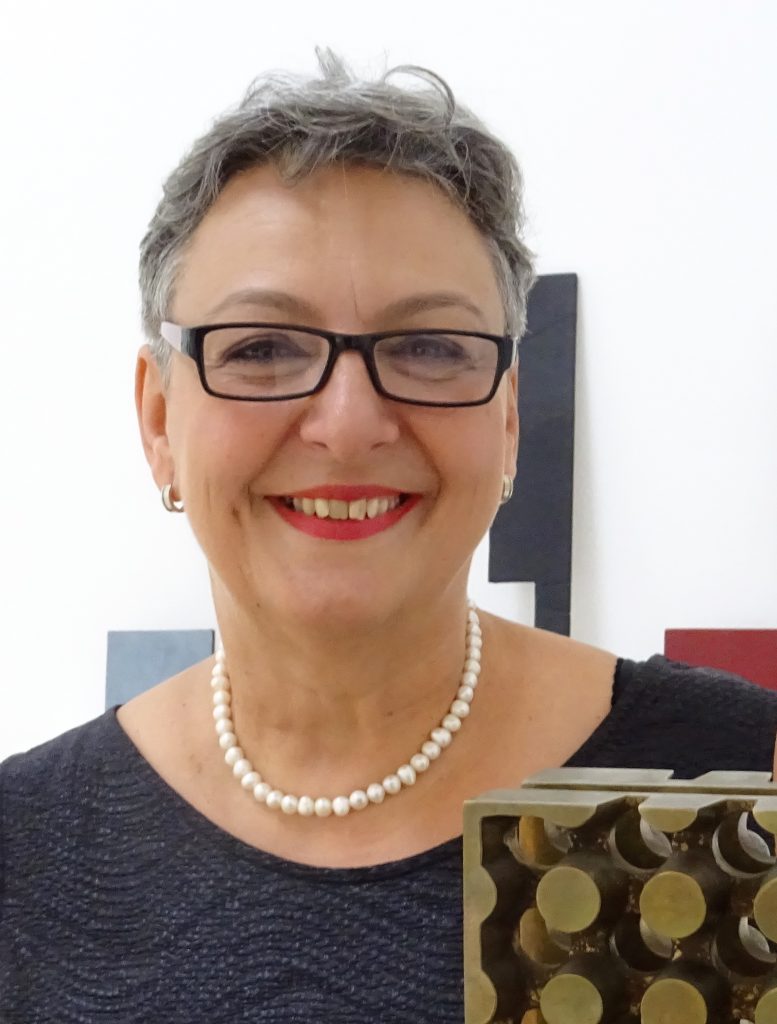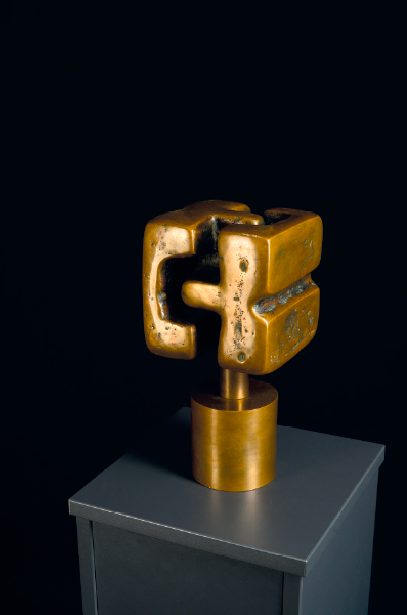Sorina JECZA IANOVICI (1955), cultural manager, publisher and gallerist graduate of the Faculty of Philology of the University of Timişoara (1979). Doctor in visual arts (since 2006). European Studies in the field of cultural management (Diplôme Européenne en administration des projets culturels, 2001-2002, Marcel Hicter Foundation, Brussels).
Scientific researcher at the Romanian Academy, Timişoara Branch (1990-2015). Founding member, executive director (2000-2010) and president of the Triade Foundation, Timisoara (2010-2020). Co-founder of the Art Encounters Foundation, co-organizer of the Art Encounters Contemporary Art Biennale (2015, 2017, 2019). Member of Timisoara 2021 ECoC team (2012-2015). Founder of Juventus – Award given to students of art and artists under 35 years old (2003-2020).
Sorina Jecza is a leading figure in the national cultural scene, actively involved in numerous art projects. She has a relevant experience as initiator and coordinator of cultural events, such as the Triade Sculpture Park in Timisoara, the recovery of the Timisoara avant-garde movement (Groups 1.1.1, Sigma), the restoration of the artistic talents of the 1960-89, through exhibitions and an editorial program that has published over 200 albums, art books and catalogues. Organizing over 200 exhibitions – either in its own exhibition space or in partnership with the main art museums in Romania (Timisoara, Cluj, Craiova, Oradea, MNAC Bucharest, Palatele Brâncovenești Mogosoaia), or similar institutions abroad, like Passarelle – Centre d’Art Contemporaine Brest, Atelier Grognard – Rueil Malmaison / France, ZKM Karlsruhe, Central Museum of the Danube Swords – Ulm, Ritter Museum / Germany, MUMOK – Vienna, MAK -Vienna / Austria, Museum of Modern Art – Warsaw / Poland, Garage Museum -Moscow / Russia, Sao Paolo Museum / Brasilia, Novi Sad / Serbia, Fondazione Gervasuti Venice / Italy etc.
Supporter of a program to promote emerging art, focused on education. Active role in presenting Romanian art abroad.
She has published, as author or co-author, works of literary and art criticism.
She continues to be dedicated to the legacy of the sculptor Peter Jecza, through the Jecza Museum that she initiated with her son in Timisoara.

Photo: Courtesy of the curator
DD: Ms Jecza, You are significantly present on the Romanian art scene for several decades and actively involved in the Art Encounters Biennial in Timisoara as well as the Festival of Contemporary Art Danube Dialogues in Novi Sad. How do you perceive the importance and the influence of these two exhibitions in the region?
As we all know already, contemporary art is a sensitive sensor to what is happening in the society, it is an instrument used to talk about the world, about reality, about our place on this planet. The experience of twentieth-century art shows that the “secure” area in which art lived was greatly restricted. Art, understood in the sense of non-involvement, has a given way to a form of manifestation much more socially related, with a direct voice of the events that happen in the world, nowadays.
For too long, borders of all kinds have induced the idea of difference, making us feel like strangers to each other, but the art we present now dialogically cancels these boundaries.
Therefore, the two big events in Timisoara and Novi Sad, Art Encounters Biennial and Danube Dialogue, open the space of a larger dialogue, capable of structuring the consciousness of the community, in the sense of stimulating creative ideas for a more inclusive and a more sustainable future.
I therefore consider as extremely relevant the junction that we create between our events, between our cities and our countries, because these bridges connect, bring closer, build togetherness. The two large events became an open platform for contemporary art, a meeting point for people, ideas, cultures, communities, making the connection with the global art scene possible. The influence and importance these events exercise in the region structures open, free relations, making dialogue possible.
DD: ‘Art dialogues Novi Sad-Timisoara“’ two future European Capitals of Culture, will be organized for the third time. How did you select the artists for the dialogue?
In the choice of the proposed artists, the opening had an important role: we wanted to give voice to the dialogue, both through different generations of artists and through different media of expression. We thus chose artists representing 3 successive generations – 70s-80s-90s, who develop various artistic practices – sculpture, painting, graphics. We opted, without prejudice, for seemingly traditional media, which articulate the artistic discourse in a subtle way, open to multiple meanings.
DD: What are the perspectives of long term cooperation in the field of visual art within the framework of the largest European cultural project?
Our intention is to create a multi-layered space framework, including artistic dialogue, research, mobilities, audience development and cultural capacity building in the region.
Our purpose is to synchronise the paths and to draw the art as a connecting bridge between all the actors in the region, based on the diversity, as well as on the similarities of our entities, taking into consideration our common historical experience. By rebuilding the connection between our artistic communities, we intend to build a stronger position for us and for the Region in the European context.

Photo: courtesy of the curator Sorina Jecza Ianovici
